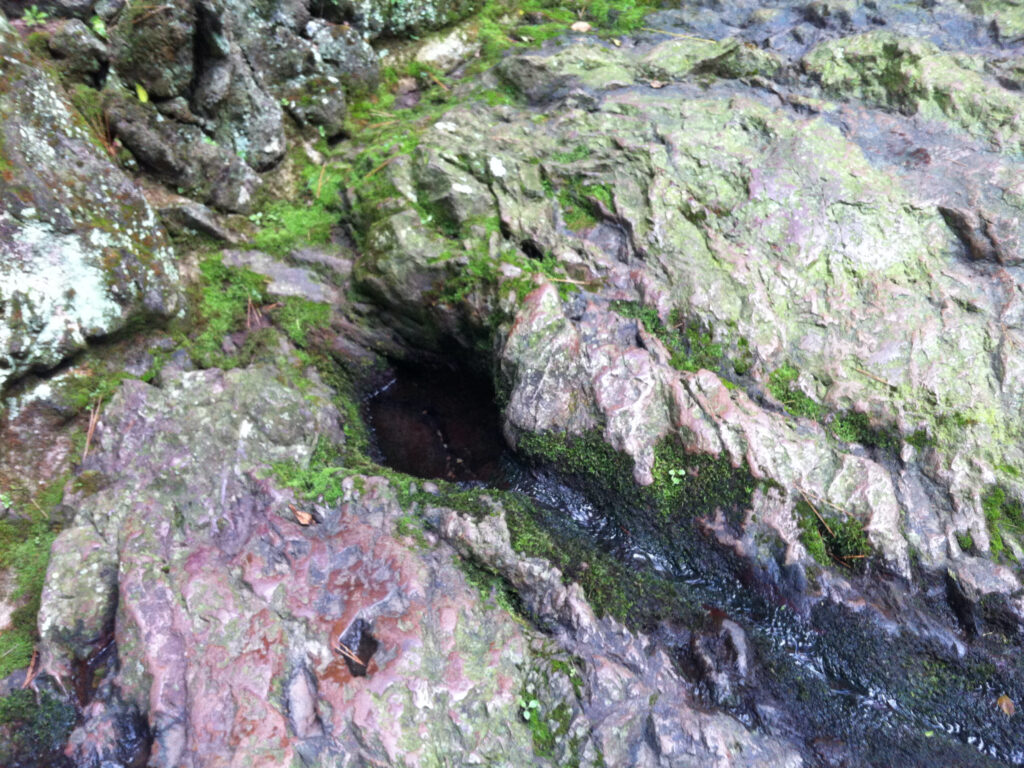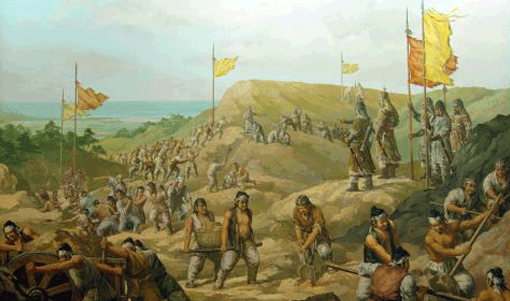Did you know that you can tour the remains of a fortress that was built nearly 750 years ago on Jeju? The great earthen barriers that still stand at the fortress known as Hangpaduri stretch for over 3.8 kilometers. Hangpaduri was the site of Korea’s last stand against the Mongol occupation of the peninsula. It is situated in Goseong-ri in Aewol-eup, at a strategic site with a view of the ocean to the north, protected by river valleys to the east and west. Just to the south of the fortress you can see the rocks that soldiers used for target practice with their bows and arrows. Gusimul, a natural spring just outside the fortress that was used for drinking water by both soldiers and the local residents, still flows today, as does Jangsumul (General’s Spring), that was said to have started flowing out of the footprint left in rock by General Kim Tong-Jeong when he jumped down off of the fortress walls.

(Photo: jeju.guru)
After four decades of resistance against the invasion of the Mongol Yuan dynasty that controlled China, the military regime of Goryeo admitted defeat in 1270. But a group of soldiers refused to submit, and moved their base from Ganghwado to Jindo Island. These rebels were known as the Sambyeolcho, meaning Three Elite Patrols. In 1271, the Sambyeolcho were forced to relocate again, this time to Jeju under the leadership of General Kim Tong-jeong. Many of the people of Jeju assisted the rebels in constructing the fortress in Goseong-ri. The influence of the Sambyeolcho rebellion threatened the Mongols’ hold over the country. So in 1273, a combined army of over 12,000 Goryeo and Mongol troops landed on the island.

Eventually the fortress at Hangpaduri fell, and the Mongol conquest of Goryeo was complete. The Yuan dynasty held sway over the Korean peninsula and Jeju for just over 100 years. Restorations at the Hangpaduri fortress began in 1978, and excavations have uncovered roof tiles, celadon sherds, and containers used by soldiers known as Mongol bottles. Small iron plates that were put together in the manner of fish scales to form armor have also been found at the site. There is now an information center and gallery of incredible paintings depicting scenes of Hangpaduri’s construction and the battles that took place there, and visitors can walk along sections of the original fortress walls.

You can see artifacts from these times and find out more about the Sambyeolcho at the Jeju National Museum (website / Instagram).
Information is also available in Korean at the Jeju Provincial Government’s website.
